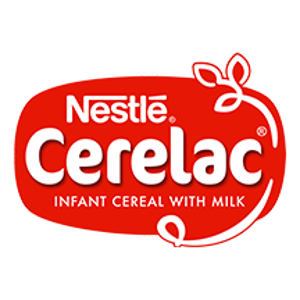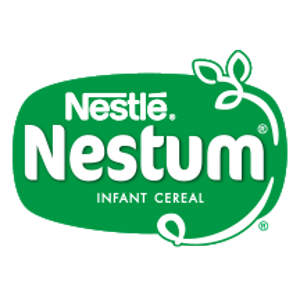
Solid Infant Food: Next Steps
While introducing your baby to his first infant solid food there is a lot to have in mind, click here to learn everything you need to know.
As your little one grows, their nutritional needs evolve, marking an exciting phase in their development: the introduction of infant solid food. This milestone not only signifies a shift in your baby's diet but also opens a world of exploration and flavor discovery. It's a journey filled with joy and wonder, and as a mother, you play a crucial role in guiding your child through this transition.
Introducing solid foods to your infant is a significant step towards fostering their growth and development. As they approach this stage, you may have questions and uncertainties, but rest assured, you're not alone. With the right information and guidance, you can navigate this journey with confidence and ease.
In Baby&Me, we'll delve into the next steps of solid infant food, providing you with valuable insights, tips, and advice to support you and your little one along the way. From understanding when to start introducing solids to exploring various nutritious options and navigating potential challenges.
When to Introduce Solid Foods
One of the most common questions parents have when it comes to introducing solid foods is, "When is the right time?" The answer varies for each baby, as readiness for solids depends on a combination of factors including age, developmental milestones, and signs of readiness.
- The American Academy of Pediatrics (AAP) recommends waiting until your baby is around 6 months old. By this age, most babies have developed the necessary skills, such as head control and the ability to sit up with support, to safely swallow solid foods.
- Look for cues that your baby is ready to start solids, such as showing interest in what you're eating, being able to hold their head steady, and exhibiting the ability to move food from the front of their mouth to the back for swallowing.
- Babies are born with a natural reflex called the tongue thrust reflex, which causes them to push food out of their mouths with their tongues. As they approach 6 months of age, this reflex begins to diminish, allowing them to more effectively eat and swallow solid foods.
- Breast milk provides all the necessary nutrients for your baby's first six months of life. As they grow, their nutritional needs begin to exceed what milk alone can provide, making it an appropriate time to introduce complementary solid foods.
Remember, every baby is unique, so it's important to observe your child's cues and consult with your pediatrician before starting solids. Starting too early can increase the risk of choking and digestive issues, while waiting too long may lead to nutrient deficiencies.
Some Infant Solid Foods to Prepare
When it comes to introducing solid foods to your infant, variety is key. Offering a diverse range of flavors and textures not only exposes your baby to different tastes but also helps to develop their palate and encourages a lifelong love of healthy eating.
Here are some nutritious and easy-to-prepare solid foods to consider for your little one:
Single-Ingredient Purees
Start with simple, single-ingredient purees made from fruits and vegetables. Soft fruits like bananas, avocados, and ripe pears are excellent choices, as are cooked and mashed vegetables such as sweet potatoes, carrots, and peas.
These foods are gentle on your baby's stomach and provide essential vitamins and minerals.
Iron-Rich Foods
Around 6 months of age, your baby's iron stores from birth begin to deplete, making it important to introduce iron-rich foods into their diet. Pureed meats, such as chicken, turkey, and beef, are excellent sources of iron and protein. You can also offer iron-fortified cereals mixed with breast milk, formula, or water.
Soft Cooked Grains
As your baby becomes more accustomed to eating solid foods, you can gradually introduce soft-cooked grains like rice, oats, and quinoa. These grains provide energy and essential nutrients such as carbohydrates and fiber.
Start with finely mashed or pureed grains and gradually increase the texture as your baby becomes more comfortable with chewing.
Yogurt and Cheese
Full-fat plain yogurt and soft cheeses are great sources of calcium and protein for your growing baby. Choose plain varieties without added sugars or artificial flavors and consider mixing them with pureed fruits or vegetables for added flavor and nutrition.
Finger Foods
As your baby's motor skills develop, introduce finger foods that are easy for them to grasp and chew. Soft-cooked vegetables like broccoli florets, carrot sticks, and steamed green beans make excellent options, as do ripe fruits cut into small, bite-sized pieces.
Remember to introduce new foods one at a time and watch for any signs of allergies or intolerance. With patience, persistence, and a bit of creativity, you can create nutritious and delicious meals that will nourish your baby and help them thrive during this exciting stage.

Infant Solid Food: Next Steps
Once your baby has become accustomed to eating single-ingredient purees and soft foods, you can gradually progress to more complex textures and flavors. This stage marks an exciting time of exploration and discovery as your little one begins to develop their chewing and swallowing skills.
- Expand your baby's palate by offering purees and mashed foods that combine multiple ingredients. Mix fruits and vegetables or incorporate grains with protein-rich foods like chicken or tofu.
- As your baby becomes more comfortable with swallowing and chewing, gradually increase the texture of their foods. The transition from smooth purees to thicker textures with small soft lumps or chunks.
- Encourage your baby to feed themselves by offering age-appropriate finger foods that they can pick up and eat on their own. This not only helps to develop their fine motor skills but also fosters independence and confidence during mealtime.
- Introduce common allergenic foods, such as eggs, dairy, peanuts, tree nuts, soy, wheat, fish, and shellfish, one at a time and observe your baby for any signs of allergic reactions. Talk to your pediatrician if you have a family history of food allergies.
- Remember that solid foods are complementary to breast milk or formula, which should remain the primary source of nutrition for your baby during their first year of life.
As you navigate the next steps of introducing solid foods to your infant, remember to follow their cues, be patient, and enjoy the journey together.
Mealtime should be a positive and enjoyable experience for both you and your baby as you continue to nourish their growing bodies and adventurous palates.
SOURCE:

Gain a better understanding of your child's development with the help of our stages
































